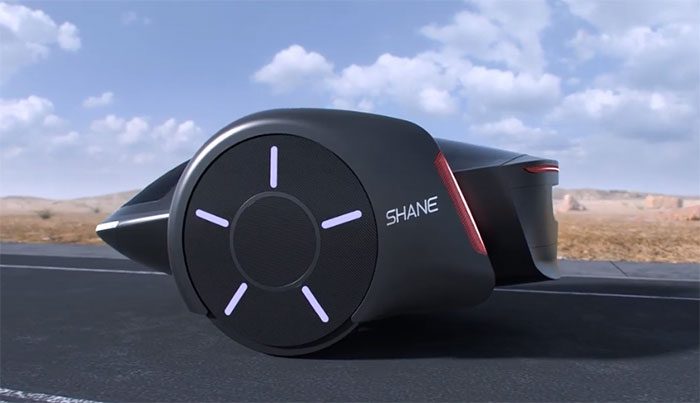SHANE can carry 5 people and maintain balance while operating in urban areas or on highways.
Design of the SHANE electric vehicle prototype. (Video: Shane Chen).
The world’s first parallel two-wheeled electric vehicle was introduced by Shane Chen, the creator of the famous self-balancing hoverboard. Chen named the prototype SHANE and stated that it is an “effective and practical two-wheeled vehicle design for daily use in urban settings and on highways”, as reported by Interesting Engineering on October 18.
The vehicle looks like nothing seen on the road before, resembling a skateboard with wheels. However, this design is very practical as it comfortably accommodates 5 people and allows easy entry and exit thanks to a large hatch at the front. SHANE also features a similar hatch at the rear, providing access to the luggage compartment.
The unique aspect of SHANE is that it operates on two large wheels compared to the four wheels typically found on vehicles of similar size. The vehicle balances itself at the front and rear through smart sensors and a motor integrated into the chassis. Additionally, SHANE does not have any steering bars (the link in the steering system that transfers power from the steering gear to the wheels). Instead, it maneuvers by increasing or decreasing the force and speed to one or both wheels.

SHANE operates on two large wheels compared to the four wheels typically found on vehicles of similar size.
The designer did not provide information about SHANE’s electric motor and battery, as well as its range and maximum speed. The vehicle is aimed at urban and highway use, requiring a range of over 160 km and a maximum speed of 112 km/h.
The design of SHANE includes wheels that automatically respond to the vehicle’s body to maintain perfect balance, allowing it to operate at higher speeds. Chen has spent years developing self-balancing technology for skateboards to apply to this new vehicle. The vehicle offers stability through a change in center of gravity. The ability to control speed differences between the two wheels makes driving and parking enjoyable. The large wheels help reduce rolling resistance, while the regenerative shock absorbers convert shock into energy to recharge the battery.
Moreover, the vehicle optimizes energy performance with its large wheel design. Currently, Chen is working with partners to bring this design to reality.


















































